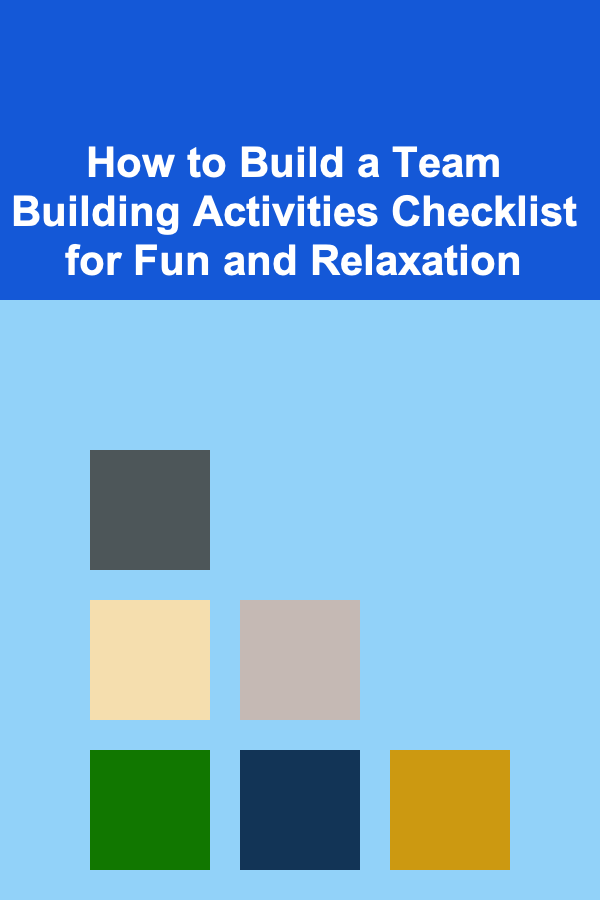
How To Practice Stress-Reducing Techniques Daily: A Comprehensive Guide
ebook include PDF & Audio bundle (Micro Guide)
$12.99$10.99
Limited Time Offer! Order within the next:

In today's fast-paced and demanding world, stress has become an almost ubiquitous part of life. From work pressures and financial worries to relationship challenges and health concerns, the sources of stress are numerous and varied. While occasional stress can be a motivator, chronic stress can have detrimental effects on our physical, mental, and emotional well-being. It can lead to a range of health problems, including anxiety, depression, heart disease, digestive issues, and a weakened immune system. Therefore, learning and consistently practicing stress-reducing techniques is crucial for maintaining a healthy and balanced life.
This article provides a comprehensive guide to incorporating effective stress-reducing techniques into your daily routine. It explores various methods, from mindfulness and meditation to physical exercise and creative expression, offering practical tips and strategies for implementing them successfully. By adopting these techniques, you can cultivate resilience, enhance your overall well-being, and navigate the challenges of life with greater ease and grace.
Understanding Stress and Its Impact
Before delving into specific techniques, it's essential to understand the nature of stress and how it affects us. Stress is the body's natural response to demands or threats, known as stressors. When faced with a stressor, the body activates the "fight-or-flight" response, releasing hormones like cortisol and adrenaline. This response is designed to help us cope with immediate danger, but when it's constantly activated, it can take a toll on our health.
The impact of chronic stress can be far-reaching:
- Physical Health: Increased risk of heart disease, high blood pressure, weakened immune system, digestive problems, and chronic pain.
- Mental Health: Anxiety, depression, irritability, difficulty concentrating, and memory problems.
- Emotional Health: Mood swings, feelings of overwhelm, helplessness, and burnout.
- Behavioral Changes: Changes in eating habits, sleep disturbances, social withdrawal, and increased use of alcohol or drugs.
Recognizing the signs of stress is the first step towards managing it effectively. By understanding how stress manifests in your body and mind, you can be more proactive in implementing stress-reducing techniques.
Mindfulness and Meditation: Cultivating Present Moment Awareness
Mindfulness and meditation are powerful tools for reducing stress and promoting overall well-being. Mindfulness involves paying attention to the present moment without judgment, while meditation encompasses a variety of practices that aim to train the mind to focus and quiet the internal chatter.
Mindfulness Techniques
Mindfulness can be practiced in various ways throughout the day:
- Mindful Breathing: Focusing on the sensation of your breath as it enters and leaves your body. This can be done anywhere, anytime. Notice the rise and fall of your chest or abdomen. When your mind wanders, gently redirect your attention back to your breath.
- Mindful Eating: Paying attention to the taste, texture, and smell of your food. Avoid distractions like TV or phone while eating. Savor each bite and notice how your body responds to the food.
- Mindful Walking: Focusing on the sensation of your feet touching the ground as you walk. Notice the rhythm of your steps and the movement of your body. Pay attention to your surroundings, such as the sights, sounds, and smells.
- Mindful Listening: Actively listening to others without interrupting or judging. Focus on understanding their perspective and truly hearing what they are saying.
- Body Scan Meditation: Bringing awareness to different parts of your body, noticing any sensations, tension, or discomfort. This can help you become more aware of your body's signals and release tension.
Meditation Practices
Meditation involves training the mind to focus and quiet the internal chatter. There are many different types of meditation, each with its unique approach. Here are a few popular techniques:
- Guided Meditation: Listening to a pre-recorded audio that guides you through a visualization or relaxation exercise. This is a great option for beginners, as it provides structure and direction. Numerous apps and online resources offer guided meditations on various topics, such as stress reduction, sleep improvement, and self-compassion.
- Concentration Meditation: Focusing your attention on a single point, such as your breath, a mantra, or a visual object. When your mind wanders, gently redirect your attention back to the chosen focus. This practice helps to develop concentration and mental clarity.
- Transcendental Meditation (TM): A specific type of mantra meditation that involves repeating a personalized mantra silently. TM is often practiced for 20 minutes twice a day and has been shown to reduce stress and anxiety.
- Loving-Kindness Meditation (Metta): Cultivating feelings of compassion and kindness towards yourself and others. This involves repeating phrases such as "May I be happy," "May I be healthy," "May I be safe," and "May I be at ease." Extend these wishes to loved ones, acquaintances, and even difficult people.
Practical Tips for Incorporating Mindfulness and Meditation:
- Start Small: Begin with just 5-10 minutes of mindfulness or meditation per day and gradually increase the duration as you become more comfortable.
- Find a Quiet Space: Choose a quiet and comfortable place where you won't be disturbed.
- Be Patient: It's normal for your mind to wander during meditation. Don't get discouraged. Simply gently redirect your attention back to your breath or chosen focus.
- Use an App: Apps like Headspace, Calm, and Insight Timer offer guided meditations and mindfulness exercises that can help you get started.
- Be Consistent: The key to reaping the benefits of mindfulness and meditation is consistency. Make it a part of your daily routine.
"You can't stop the waves, but you can learn to surf." - Jon Kabat-Zinn, founder of Mindfulness-Based Stress Reduction (MBSR)
Physical Exercise: Releasing Tension and Boosting Mood
Physical exercise is a powerful stress reliever. When you exercise, your body releases endorphins, which have mood-boosting and pain-relieving effects. Exercise also helps to reduce muscle tension, improve sleep, and boost self-esteem.
Types of Exercise
Any type of physical activity can be beneficial for stress reduction, but some types may be particularly effective:
- Cardiovascular Exercise: Activities like running, swimming, cycling, and dancing raise your heart rate and improve circulation. Aim for at least 30 minutes of moderate-intensity cardiovascular exercise most days of the week.
- Strength Training: Lifting weights or using resistance bands can help to build muscle and improve overall strength. Strength training can also help to reduce stress by improving body image and self-confidence.
- Yoga: Combines physical postures, breathing techniques, and meditation. Yoga can help to reduce stress, improve flexibility, and promote relaxation.
- Tai Chi: A gentle form of exercise that involves slow, flowing movements. Tai Chi can help to improve balance, coordination, and stress reduction.
- Walking in Nature: Spending time in nature has been shown to reduce stress and improve mood. Walking in a park, forest, or other natural setting can be a great way to combine exercise and nature therapy.
Practical Tips for Incorporating Exercise:
- Find an Activity You Enjoy: Choose an activity that you find enjoyable and that fits your lifestyle. This will make it more likely that you'll stick with it.
- Set Realistic Goals: Start with small, achievable goals and gradually increase the intensity and duration of your workouts.
- Schedule It In: Treat exercise like any other important appointment and schedule it into your day.
- Find a Workout Buddy: Exercising with a friend or family member can help you stay motivated and accountable.
- Make It Fun: Listen to music, watch a TV show, or exercise outdoors to make your workouts more enjoyable.
Creative Expression: Tapping into Your Inner Artist
Engaging in creative activities can be a wonderful way to release stress and express your emotions. Creative expression allows you to tap into your inner artist and explore your thoughts and feelings in a safe and non-judgmental environment.
Creative Activities
There are countless ways to express yourself creatively. Here are a few ideas:
- Painting or Drawing: Express your emotions through color, line, and form. You don't need to be a skilled artist to benefit from painting or drawing. Simply allow yourself to experiment and explore your creativity.
- Writing: Journaling, poetry, and creative writing can help you to process your thoughts and feelings. Writing can be a cathartic experience, allowing you to release pent-up emotions and gain clarity.
- Music: Playing an instrument, singing, or listening to music can be a great way to relax and reduce stress. Music has a powerful effect on our emotions and can help us to connect with our inner selves.
- Dancing: Moving your body to music can be a fun and energizing way to release stress. Dance allows you to express yourself freely and connect with your body.
- Crafting: Knitting, crocheting, scrapbooking, and other crafts can be relaxing and rewarding. Crafting provides a sense of accomplishment and allows you to create something tangible.
- Gardening: Connecting with nature and nurturing plants can be a therapeutic and stress-reducing activity. The act of planting, weeding, and watching plants grow can be very calming.
Practical Tips for Incorporating Creative Expression:
- Don't Be Afraid to Experiment: Try different creative activities until you find something that you enjoy.
- Focus on the Process, Not the Product: The goal is to enjoy the creative process, not to create a masterpiece.
- Set Aside Time: Schedule time for creative expression in your daily or weekly routine.
- Create a Creative Space: Designate a space in your home where you can engage in creative activities without distractions.
- Join a Creative Group: Connecting with other creative individuals can be a great way to stay motivated and inspired.
Social Connection: Building a Support Network
Humans are social beings, and connecting with others is essential for our well-being. Social connection can help to reduce stress, improve mood, and boost self-esteem. Building a strong support network of friends, family, and colleagues can provide a buffer against the negative effects of stress.
Ways to Connect with Others
- Spend Time with Loved Ones: Make time for meaningful interactions with your friends and family. This could involve having dinner together, going for a walk, or simply chatting on the phone.
- Join a Club or Group: Joining a club or group that aligns with your interests can be a great way to meet new people and build connections. This could be a book club, a hiking group, or a volunteer organization.
- Volunteer: Helping others can be a rewarding way to connect with your community and make a difference. Volunteering can also provide a sense of purpose and accomplishment.
- Reach Out to Friends: Don't wait for others to reach out to you. Take the initiative to connect with friends and acquaintances. This could involve sending a text message, making a phone call, or inviting someone for coffee.
- Practice Active Listening: When you're interacting with others, practice active listening. This involves paying attention to what the other person is saying, asking clarifying questions, and showing empathy.
Practical Tips for Building a Support Network:
- Be Open and Approachable: Smile, make eye contact, and be open to meeting new people.
- Be a Good Listener: Show genuine interest in what others have to say.
- Be Supportive: Offer support and encouragement to your friends and family.
- Be Yourself: Don't try to be someone you're not. Authenticity is key to building genuine connections.
- Be Patient: Building meaningful relationships takes time and effort. Don't get discouraged if it doesn't happen overnight.
Time Management and Organization: Taking Control of Your Schedule
Feeling overwhelmed by tasks and deadlines can be a major source of stress. Effective time management and organization skills can help you to take control of your schedule and reduce feelings of overwhelm.
Time Management Techniques
- Prioritize Tasks: Identify the most important tasks and focus on completing those first. Use a system like the Eisenhower Matrix (urgent/important) to prioritize your tasks.
- Break Down Large Tasks: Break large tasks into smaller, more manageable steps. This can make them seem less daunting and easier to accomplish.
- Create a Schedule: Schedule your tasks and activities into your day. This can help you to stay organized and on track. Use a planner, calendar, or to-do list app.
- Set Realistic Goals: Set realistic goals for what you can accomplish in a given day or week. Don't try to do too much at once.
- Delegate Tasks: If possible, delegate tasks to others. This can free up your time and reduce your workload.
- Learn to Say No: Don't be afraid to say no to commitments that you don't have time for or that don't align with your priorities.
- Avoid Procrastination: Procrastination can lead to increased stress and anxiety. Try to tackle tasks as soon as possible.
Organization Strategies
- Declutter Your Space: A cluttered environment can contribute to feelings of stress and overwhelm. Take some time to declutter your home and workspace.
- Use a Filing System: Organize your documents and files using a filing system. This can help you to find what you need quickly and easily.
- Use Technology: Utilize technology to stay organized. Use apps for to-do lists, calendar reminders, and note-taking.
- Establish Routines: Establish daily and weekly routines to help you stay organized and on track.
Sleep Hygiene: Prioritizing Rest and Recovery
Adequate sleep is essential for physical and mental health. Sleep deprivation can lead to increased stress, anxiety, and depression. Practicing good sleep hygiene can help you to improve the quality and quantity of your sleep.
Tips for Improving Sleep Hygiene
- Establish a Regular Sleep Schedule: Go to bed and wake up at the same time each day, even on weekends. This helps to regulate your body's natural sleep-wake cycle.
- Create a Relaxing Bedtime Routine: Develop a relaxing bedtime routine to help you wind down before sleep. This could involve taking a warm bath, reading a book, or listening to calming music.
- Make Your Bedroom a Sleep Sanctuary: Make sure your bedroom is dark, quiet, and cool. Use blackout curtains, earplugs, or a white noise machine to create a more sleep-friendly environment.
- Avoid Caffeine and Alcohol Before Bed: Caffeine and alcohol can interfere with sleep. Avoid consuming these substances in the hours leading up to bedtime.
- Limit Screen Time Before Bed: The blue light emitted from electronic devices can disrupt sleep. Avoid using phones, tablets, and computers in the hour before bed.
- Get Regular Exercise: Regular exercise can improve sleep quality. However, avoid exercising too close to bedtime.
- Manage Stress: Stress can interfere with sleep. Practice stress-reducing techniques, such as mindfulness or meditation, to help you relax before bed.
Seeking Professional Help
While the techniques outlined in this article can be effective for managing stress, it's important to recognize when professional help is needed. If you're experiencing chronic stress that is significantly impacting your life, consider seeking help from a therapist, counselor, or other mental health professional.
Signs You May Need Professional Help:
- You're experiencing persistent feelings of anxiety, depression, or overwhelm.
- Stress is interfering with your relationships, work, or daily activities.
- You're having difficulty sleeping or eating.
- You're experiencing physical symptoms of stress, such as headaches, stomachaches, or muscle tension.
- You're turning to unhealthy coping mechanisms, such as alcohol or drugs.
A mental health professional can help you to identify the sources of your stress, develop coping strategies, and improve your overall well-being.
Conclusion: A Holistic Approach to Stress Reduction
Practicing stress-reducing techniques daily is an investment in your overall health and well-being. By incorporating mindfulness, exercise, creative expression, social connection, time management, and good sleep hygiene into your routine, you can cultivate resilience and navigate the challenges of life with greater ease. Remember that stress management is a journey, not a destination. Be patient with yourself, experiment with different techniques, and find what works best for you. By adopting a holistic approach to stress reduction, you can create a more balanced, fulfilling, and meaningful life.

How to Build a Checklist for Bringing the Right Documents to Your Interview
Read More
How to Build a Team Building Activities Checklist for Fun and Relaxation
Read More
How to Create a Rustic Home Decor Style on a Budget
Read More
How to Leverage Seasonal Demand for Higher Rent
Read More
How to Save Money on Utilities and Lower Your Bills
Read More
How to Improve Your Focus and Concentration: A Deep Dive
Read MoreOther Products

How to Build a Checklist for Bringing the Right Documents to Your Interview
Read More
How to Build a Team Building Activities Checklist for Fun and Relaxation
Read More
How to Create a Rustic Home Decor Style on a Budget
Read More
How to Leverage Seasonal Demand for Higher Rent
Read More
How to Save Money on Utilities and Lower Your Bills
Read More